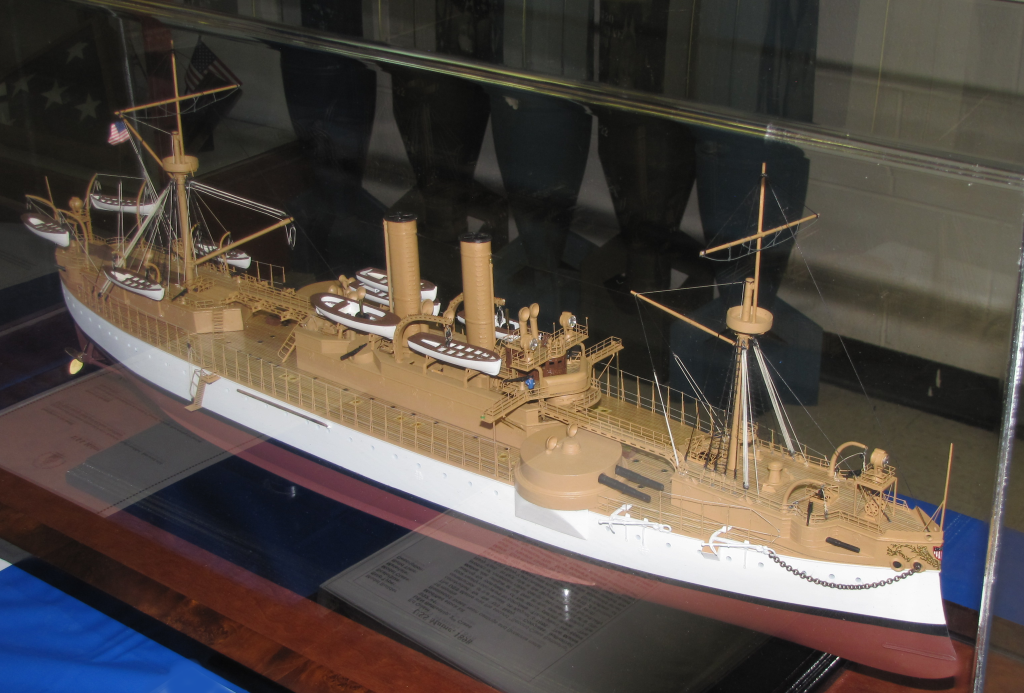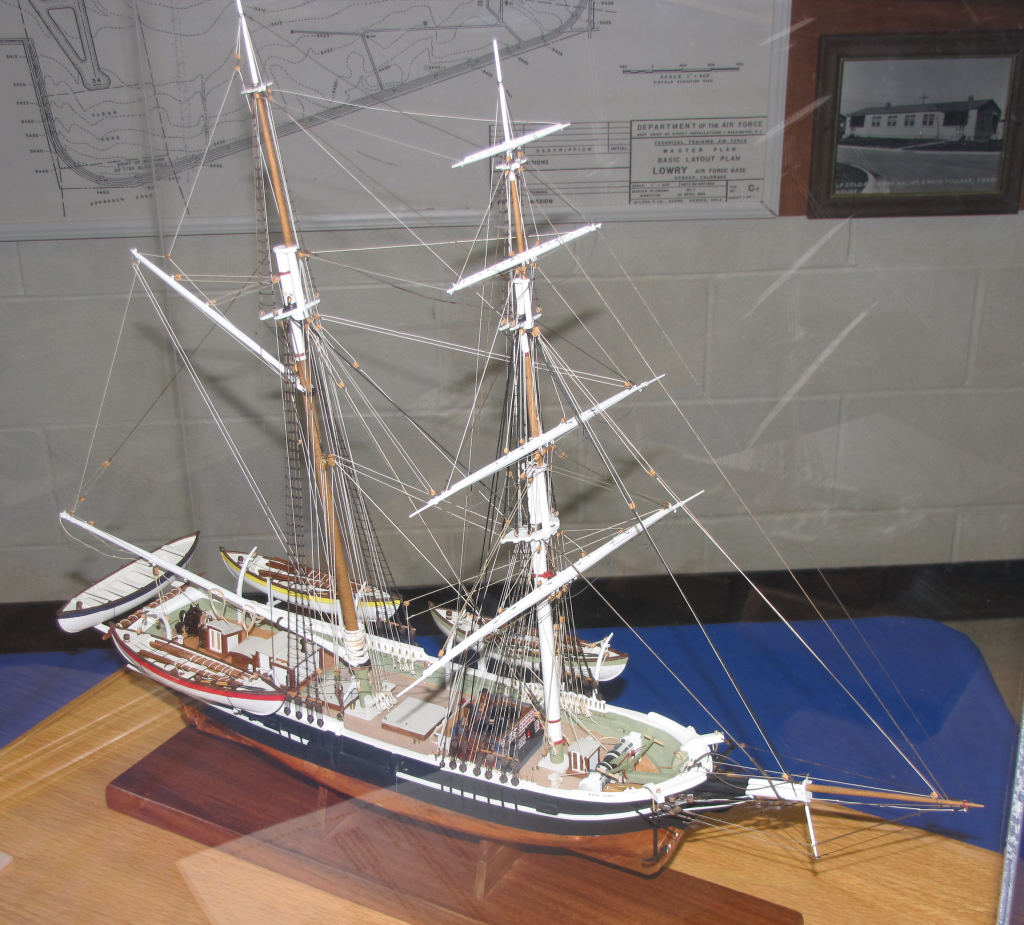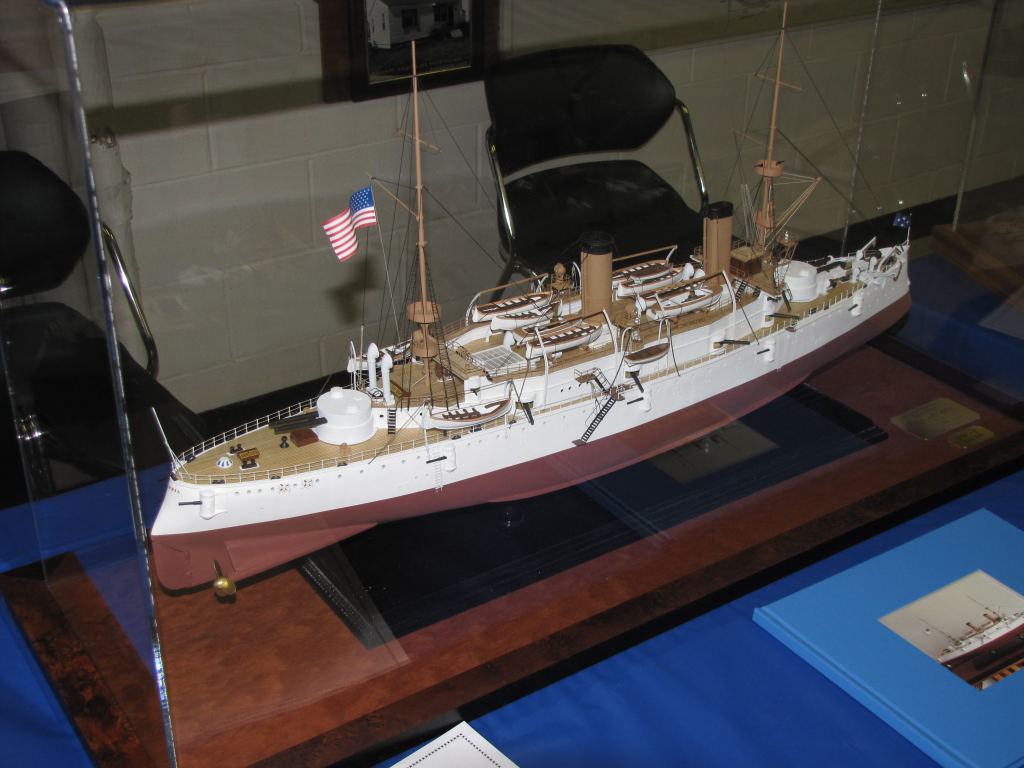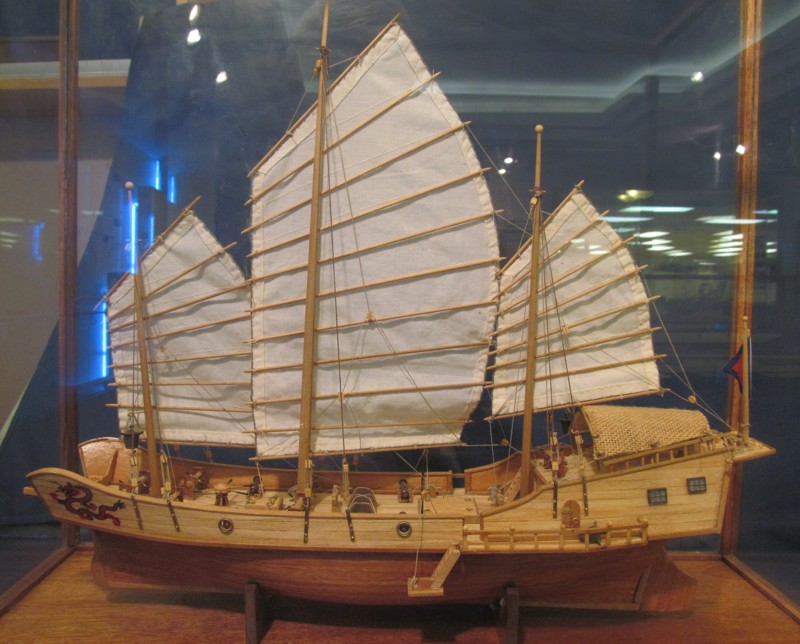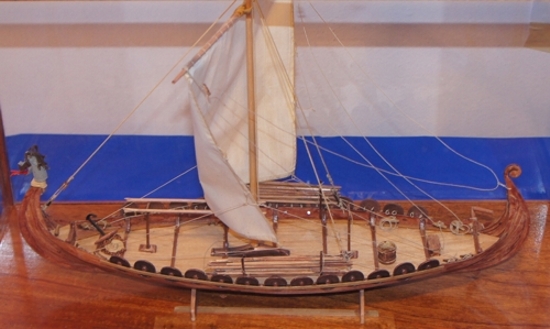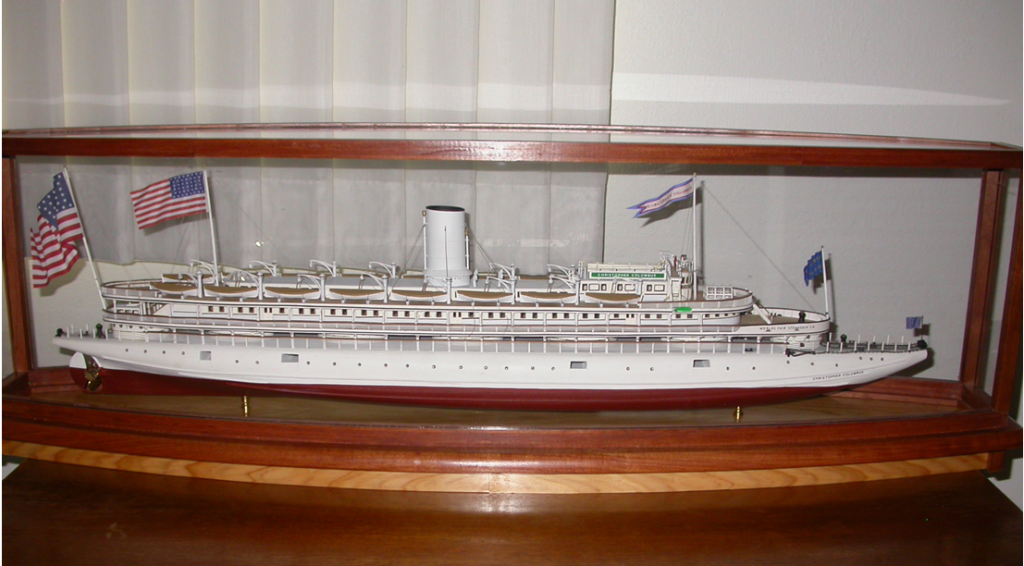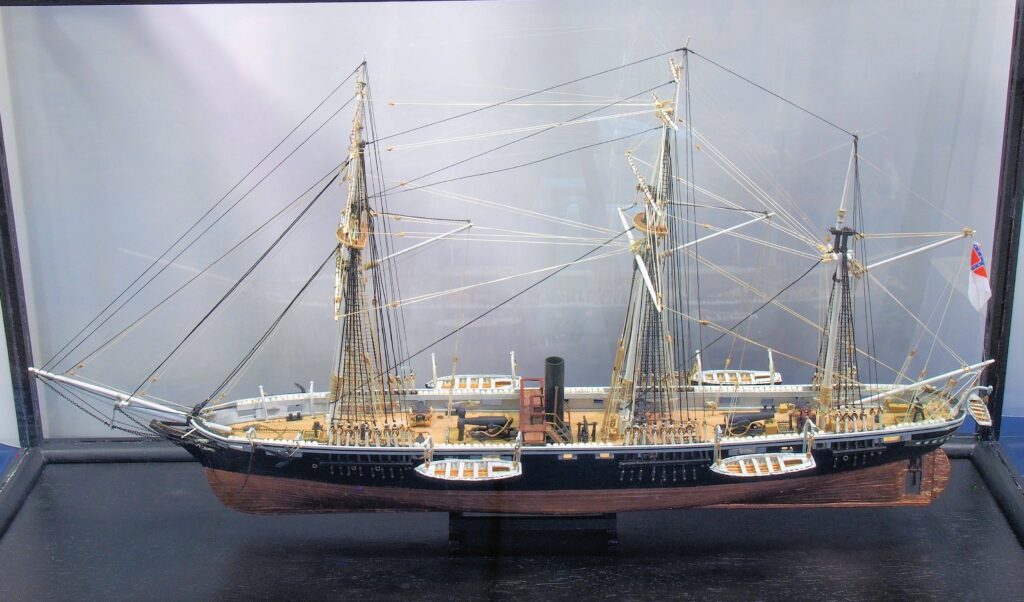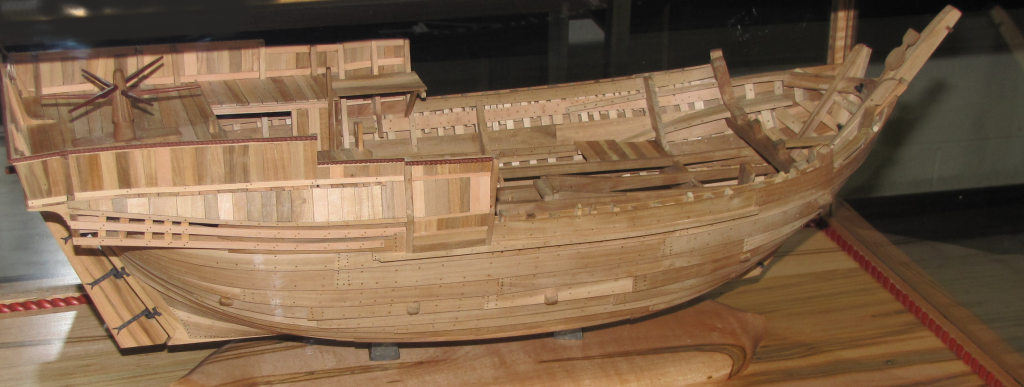
Description of the model
John McGann built this model from scratch using drawings produced by the shipwright responsible for recovering and restoring the sunken ship. He used apple wood. John reproduced every piece that was recovered from the wreckage, but did not attempt to “add” pieces not found.
History of the ship
The Cog replaced Viking style vessels around 900 AD. They were used throughout Europe until the 1450’s. The Cog of Bremen was being built in Bremen Germany in 1380 when a flood swept it from the yard and into the River Wesser. She capsized and was lost until the dredging of the river in 1962. It is the only known Cog existing and is now preserved and displayed at the Maritime Museum at Bremerhaven, Germany.
Scale: 1-40
30” x 16” x 17”

